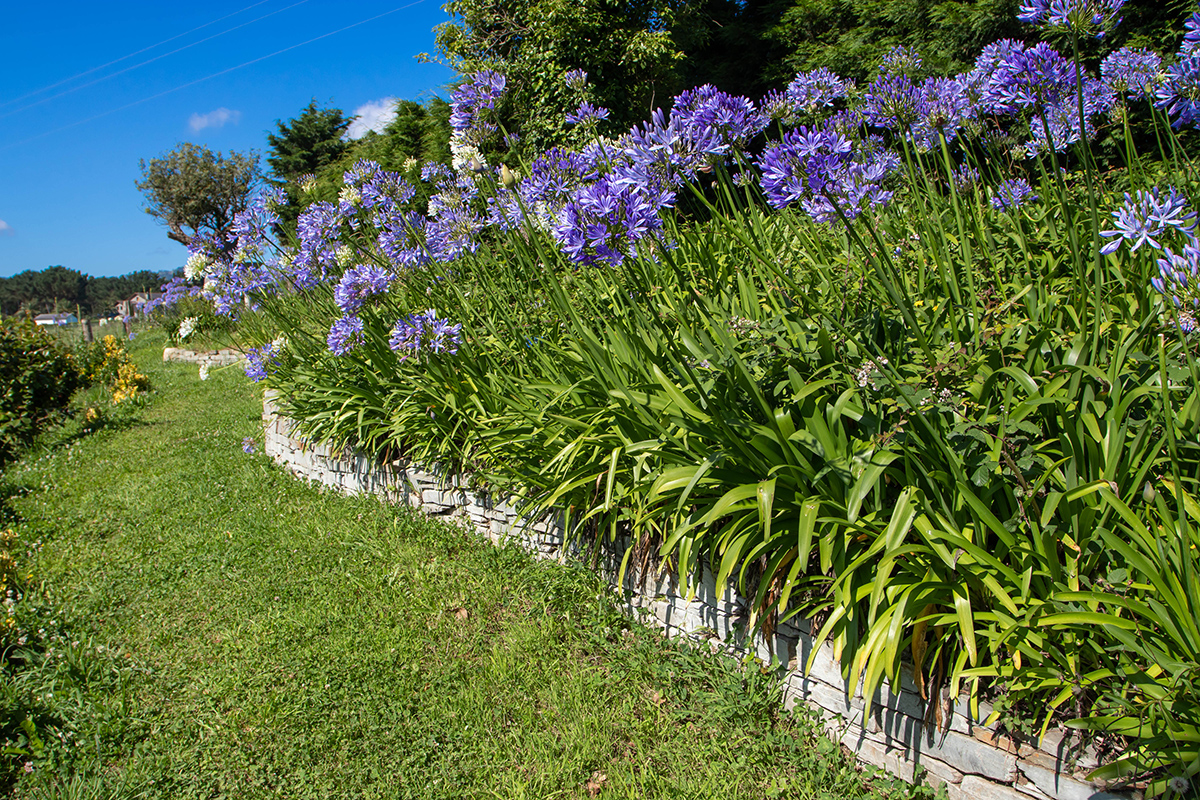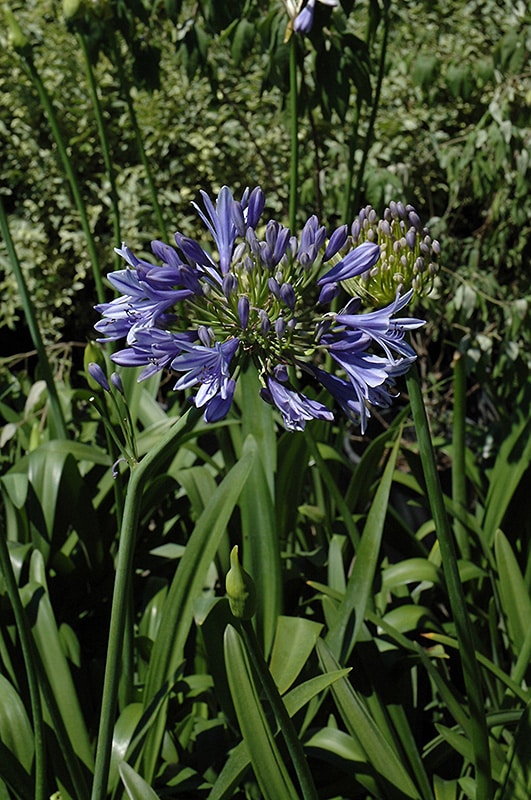Usual Agapanthus Troubles and Just How to Fix Them
Letting Loose the Secret to Effective Agapanthus Cultivation: Idea for a Flourishing Yard
In the world of horticulture, growing agapanthus successfully calls for a tactical method that incorporates numerous elements of plant treatment. With careful attention to information, one can unlock the keys to supporting these magnificent blossoms, causing a yard that prospers with elegance and vibrancy. By comprehending the subtleties of agapanthus cultivation, one can create an environment where these plants grow and grow generously. In the adhering to conversation, we will certainly explore vital tips and methods that will direct you in the direction of a growing agapanthus yard, supplying insights right into ideal practices, dirt problems, sprinkling techniques, and much more.
Growing Agapanthus: Ideal Practices
When growing Agapanthus, proper soil prep work is essential for making sure effective development and growth of these attractive blossoms. Agapanthus, generally called Lily of the Nile or African lily, grows in well-draining dirt with a slightly acidic to neutral pH level - Agapanthus. Before planting, it is vital to modify heavy clay soils with raw material such as garden compost or peat moss to boost water drainage and supply essential nutrients for the plants
To plant Agapanthus, pick a place that obtains complete sunlight to partial color, as this will certainly promote healthy and balanced development and bountiful blooming. Dig an opening twice the diameter of the plant's root ball and position the Agapanthus at the exact same deepness it was formerly expanding. Gently backfill the hole with soil, pushing down securely to remove any type of air pockets around the roots.
Water the recently grown Agapanthus extensively and remain to keep the dirt uniformly moist, specifically during the plant's active expanding period. Agapanthus. Using a well balanced fertilizer once a month can further sustain the plant's development and blooming. By complying with these best techniques for growing Agapanthus, you can develop a spectacular display of these exciting blossoms in your yard
Perfect Soil Issues for Agapanthus
For optimal development and growing success of Agapanthus plants, ensuring the soil conditions are suitable is essential. Agapanthus grows in well-draining soil with a somewhat acidic to neutral pH level ranging from 6.0 to 7.0. This type of dirt enables for sufficient water drain, protecting against waterlogging which can result in root rot. To improve dirt water drainage, take into consideration including natural issue such as compost or peat moss when preparing the growing website. Furthermore, Agapanthus likes dirt that is rich in nutrients, so including a well balanced fertilizer throughout the growing season can promote healthy and balanced development and vibrant blooms.

Watering and Fertilizing Tips
To make sure healthy development and dynamic blooms, correct watering and fertilizing techniques are important for effective Agapanthus farming. Agapanthus plants benefit from normal watering, particularly throughout the expanding period. It is recommended to water deeply once a week, making certain the soil is moist but not waterlogged. Throughout warm climate or in pots, even more constant watering may be needed to prevent the dirt from drying entirely.
When it involves fertilizing Agapanthus, a well balanced fertilizer with equal parts nitrogen, phosphorus, and potassium can be used in the spring to promote healthy and balanced development and blooming. Slow-release fertilizers are excellent for giving nutrients gradually over an extended period. Avoid over-fertilizing, as this can cause extreme vegetation development at the expenditure of blooms.
In addition, integrating organic matter browse around this web-site like compost right into the dirt can boost nutrient levels and enhance soil framework, aiding in the overall health and wellness of the Agapanthus plants. By following these watering and feeding suggestions, garden enthusiasts can guarantee their Agapanthus plants flourish and generate spectacular displays of blossoms.
Trimming and Deadheading Techniques
Proper pruning and deadheading strategies play a vital duty in keeping the health and appearances of Agapanthus plants, enhancing the crucial methods of watering and fertilizing for successful cultivation. Trimming Agapanthus involves removing spent flower heads, dead or yellowing leaves, and overall shaping of the plant to promote far better development. Deadheading, the process of removing discolored flowers, not just boosts the plant's look however also motivates additional growing.
When deadheading Agapanthus, it is suggested to trim off the blossom stem at the base using sharp, clean shears. This procedure redirects the plant's energy from seed manufacturing back right into root and foliage development, advertising a healthier and a lot more durable plant. Regular deadheading can extend the blooming period of Agapanthus and avoid self-seeding, which can lead to congestion.
In terms of trimming, Agapanthus generally advantages from a light trim after blossoming to clean up the plant and motivate fresh growth. Reducing the invested flower stems and removing any dead or broken foliage aids preserve the plant's vigor and overall appearance. Nonetheless, it is necessary to prevent reducing right into the crown of the plant, as this can compromise its health.

Protecting Agapanthus From Pests and Diseases
Implementing efficient pest and condition management approaches is crucial to securing the health and vigor of Agapanthus plants in growing. One common pest that affects Agapanthus is the Agapanthus borer, a caterpillar that tunnels right into the plant, creating damages to the fallen leaves and blossoms.
Along with parasites, Agapanthus are prone to illness such as origin rot and fungal leaf places. These issues can usually be prevented by making certain appropriate drain and avoiding overwatering. Affected components of the plant must be promptly eliminated to avoid more spread if indicators of disease show up. Fungicides may additionally be made use of as a treatment step, adhering to the producer's guidelines thoroughly. By staying vigilant and dealing with parasite and illness problems promptly, gardeners can help their Agapanthus thrive and flourish.

Verdict
To conclude, successful growing of agapanthus calls for proper growing methods, suitable soil problems, appropriate watering and feeding, regular pruning and deadheading, and protection from pests and illness. By following these methods and ideas, garden enthusiasts can useful link ensure a prospering garden full of attractive agapanthus blooms. Agapanthus. Bear in mind to maintain consistent care and interest to information to advertise the health and wellness and long life of these magnificent plants
When growing Agapanthus, proper soil preparation is important for making sure effective growth and development of these stunning flowers.Water the freshly grown Agapanthus completely and continue to maintain the dirt uniformly wet, specifically during useful site the plant's energetic growing season.For ideal growth and blooming success of Agapanthus plants, making certain the soil problems are optimal is critical. When transplanting or planting Agapanthus, make certain the dirt is well-prepared to give the needed foundation for the plants to establish themselves efficiently. One usual bug that influences Agapanthus is the Agapanthus borer, a caterpillar that tunnels right into the plant, creating damage to the flowers and fallen leaves.